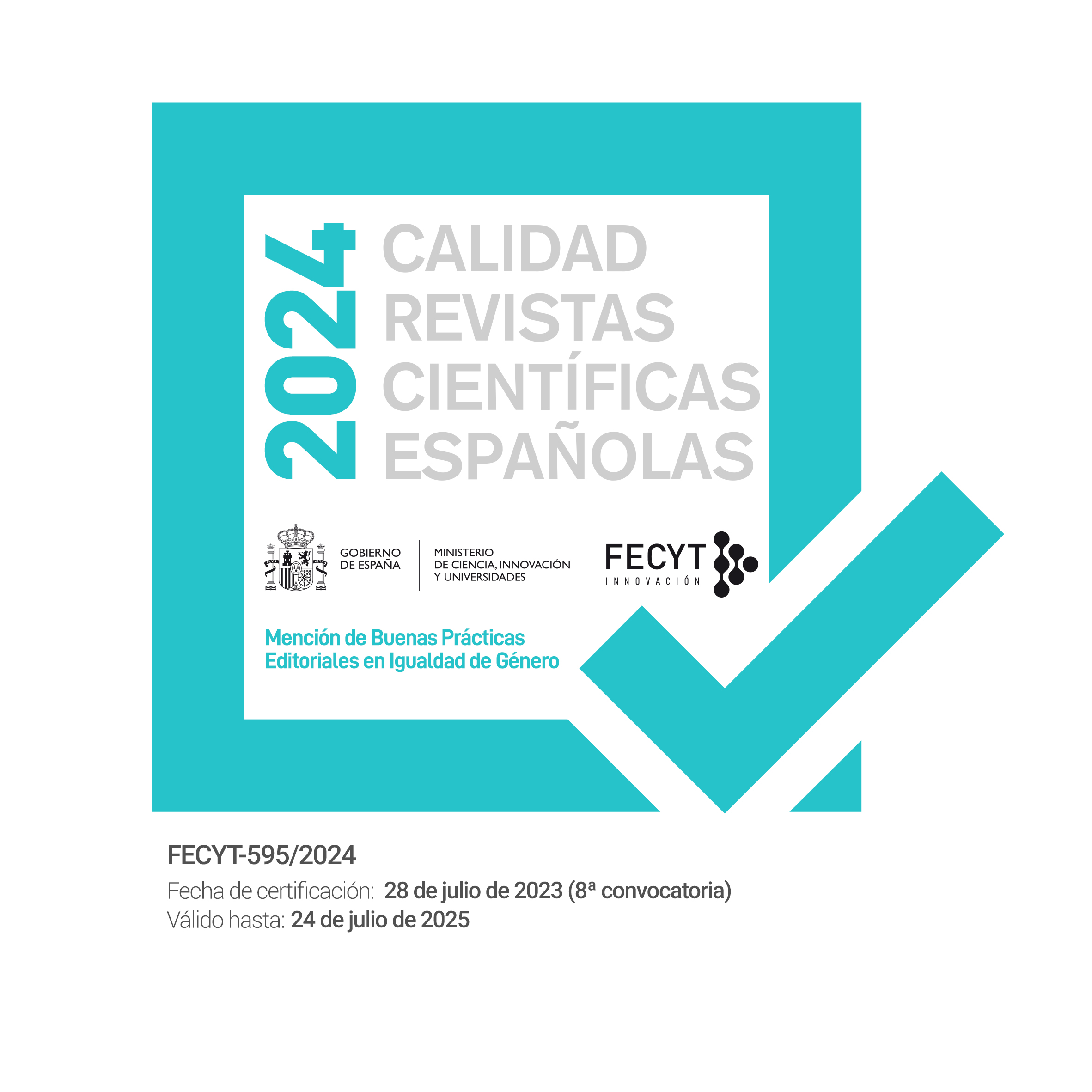Chronic health risks and healthcare access for adults experiencing homelessness in [BLINDED] during COVID-19 times
DOI:
https://doi.org/10.15257/ehquidad.2023.0005Keywords:
Homelessness, Cancer risks, Chronic health conditions, Health access, Quality of lifeAbstract
Individuals experiencing homelessness face disproportionate rates of chronic health and mental conditions, disparities, and other disadvantages that contribute to being unsheltered and that call out to social workers at the micro and macro levels—in collaboration with colleagues across professional and service sectors—to examine, mitigate, and eliminate. This mixed-methods study documented the social and health determinants that put people experiencing homelessness at risk for chronic conditions that may lead to increased cancer risk, using a survey created by the research team and administered to 74 (n=74) unhoused male and female adults over the age of 18. We hypothesized that lack of access to healthcare perpetuates chronic disease and may increase cancer risk. The findings suggest areas where social workers—in keeping with the profession’s values of service, dignity and worth of the person, and social justice— must advocate for health education, screenings, care, engage in policy work, and drive further research.
Downloads
References
Aldridge, R. W., Menezes, D., Lewer, D., Cornes, M., Evans, H., Blackburn, R. M., Byng, R., Clark, M., Denaxas, S., Fuller, J., Hewett, N., Kilmister, A., Luchenski, S., Manthorpe, J., McKee, M., Neale, J., Story, A., Tinelli, M., Whiteford, M., Hayward, A. C. (2019). Causes of death among homeless people: A population-based cross-sectional study of linked hospitalization and mortality data in England. Welcome Open Research, 4(49), 1-17. https://doi.org/10.12688/wellcomeopenres.15151.1
Artiga, S., & Hinton, E. (2018, May 10). Beyond health care: The role of social determinants in promoting health and health equity. KFF. https://www.kff.org/racial-equity-and-health-policy/issue-brief/beyond-health-care-the-role-of-social-determinants-in-promoting-health-and-health-equity/.
Asgary, R., Sckell, B., Alcabes, A. et al. (2015). Perspectives of cancer and cancer screening among homeless adults of New York City shelter-based clinics: A qualitative approach. Cancer Causes Control, 26, 1429–1438. https://doi.org/10.1007/s10552-015-0634-0
Babbie, E. R. (1990). Survey Research Methods. Wadsworth Publishing Co., Belmont.
Baggett, T. P., Chang, Y., Porneala, B. C., Bharel, M., Singer, D. E., & Rigotti, N. A. (2015). Disparities in cancer incidence, stage, and mortality at Boston Health Care for the Homeless Program. American Journal of Preventive Medicine, 49(5), 694–702. https://doi.org/10.1016/j.amepre. 2015.03.038
Baxter, A. J., Tweed, E. J., Katikireddi, S. V., & Thomson, H. (2019). Effects of housing first approaches on health and well-being of adults who are homeless or at risk of homelessness: Systematic review and meta-analysis of randomised controlled trials. Journal of Epidemiology and Community Health, 73(5), 379–387. https://doi.org/10.1136/jech-2018-210981
Biedrzycki, B. (2018). Homeless with cancer: An unrecognized problem in the United States. Clinical Journal of Oncology Nursing, 22(6), 676–679. https://doi.org/10.1188/18.cjon.676-679
Brown, R. I., & Schippers, A. (2018). The background and development of quality of life and family quality of life: Applying research, policy, and practice to individual and family living. International Journal of Child, Youth and Family Studies, 9(4), 1–11. https://doi.org/10.18357/ijcyfs94201818637
Browne, K. (2007). Snowball sampling: Using social networks to research non?heterosexual women. International Journal of Social Research Methodology, 8(1), 47–60. https://doi.org/10.1080/1364557032000081663
Busch-Geertsema, V., Culhane, D., & Fitzpatrick, S. (2016). Developing a global framework for conceptualising and measuring homelessness. Habitat International, 55, 124-132. https://doi.org/10.1016/j.habitatint.
03.004
Creswell, J. W. (2009). Research design: Qualitative, quantitative, and mixed methods approaches (3rd ed.). Sage Publications, Inc.
Dawes, D. E., & Williams, D. R. (2020). The political determinants of health. Johns Hopkins University Press. 70-73
Diener, E., Emmons, R. A., Larsen, R. J., & Griffin, S. (1985). The satisfaction with life scale. Journal of Personality Assessment, 49, 71-75. https://doi.org/10.1207/s15327752jpa4901_13
El Paso Coalition for the Homeless. January 2020 point in time. El Paso Coalition for the Homeless. http://www.epchomeless.org/pit/
Fish, G. (2021, July 30). The effect of covid-19 on homelessness in the US: United Way. United Way NCA. Retrieved September 22, 2021, from https://unitedwaynca.org/stories/effect-pandemic-homeless-us/.
Flike, K., & Aronowitz, T. (2021). Factors that influence quality of life in people experiencing homelessness: A systematic mixed studies review. Journal of the American Psychiatric Nurses Association, 107839032098528. https://doi.org/10.1177/1078390320985286
Fragala, M. S., Shiffman, D., & Birse, C. E. (2019). Population Health Screenings for the Prevention of Chronic Disease Progression. The American Journal of Managed Care, 25(11). https://www.ajmc.com/ view/population-health-screenings-for-the-prevention-of-chronic-disease-progression.
Gordon, S. J., Grimmer, K., Bradley, A., Direen, T., Baker, N., Marin, T., Kelly, M. T., Gardner, S., Steffens, M., Burgess, T., Hume, C., & Oliffe, J. L. (2019). Health assessments and screening tools for adults experiencing homelessness: a systematic review. BMC Public Health, 19(994), 1-14. https://doi.org/10.1186/s12889-019-7234-y
Green, J. & Thorogood N. (2014) Qualitative methods for health research. 3rd edition. SAGE Publications Inc.
Healthy People 2030. (2021). Health Care Access and Quality. Health Care Access and Quality - Healthy People 2030. Retrieved from https://health.gov/healthypeople/objectives-and-data/browse-objectives/health-care-access-and-quality
Housing and Urban Development (HUD) (2012, January). Criteria and recordkeeping requirements for definition of homelessness. HUD Exchange. Retrieved from https://www.hudexchange.info/resource/1974/
criteria-and-recordkeeping-requirements-for-definition-of-homeless/
Housing and Urban Development (HUD) (2019). Point-In-Time Count and Housing Inventory Count. ? Housing and Urban Development. HUD Exchange. https://www.hudexchange.info/programs/hdx/pit-hic/
Hubley, A. M., Russell, L. B., Palepu, A., & Hwang, S. W. (2012). Subjective quality of life among individuals who are homeless: A review of current knowledge. Social Indicators Research, 115(1), 509–524. https://doi.org/ 10.1007/s11205-012-9998-7
Larson, C. O. (2009). Use of the SF-12 instrument for measuring the health of homeless persons. Health Services Research, 37(3), 733-750. https://doi. org/10.1111/1475-6773.00046
Lawrie, K., Charow, R., Giuliani, M., & Papadakos, J. (2020). Homelessness, cancer and health literacy: A scoping review. Journal of Health Care for the Poor and Underserved, 31(1), 81-104. https://doi.org/10.1353/hpu.2020
.0010
Longaray, R. (2000). Research, ethics, and compliance training. CITI Program. https://about.citiprogram.org/.
Moons, P., Budts, W., & De Geest, S. (2006). Critique on the Conceptualisation of Quality of Life: A Review and evaluation of different conceptual approaches. International Journal of Nursing Studies, 43(7), 891–901. https://doi.org/10.1016/j.ijnurstu.2006.03.015
Morgan, D. L. (2014). Integrating qualitative and quantitative methods. SAGE Publications, Inc. https://doi.org/10.4135/9781544304533
Munoz, R. T., Hellman, C. M., Buster, B., Robbins, A., Carroll, C., Kabbani, M., Cassody, L., Brahm, N., & Fox, M. D. (2017). Life satisfaction, hope, and positive emotions as antecedents of health related quality of life among homeless individuals. International Journal of Applied Positive Psychology, 1(1-3), 69–89. https://doi.org/10.1007/s41042-017-0005-z
Nanjo, A., Evans, H., Direk, K., Hayward, A. C., Story, A., & Banerjee, A. (2020). Prevalence, incidence, and outcomes across cardiovascular diseases in homeless individuals using national linked electronic health records. European Heart Journal, 41(41), 4011-4020.https://doi.org/ 10.1093/eurheartj/ehaa795
National Alliance to End Homelessness. (2021, August 16). State of homelessness: 2021 edition. National Alliance to End Homelessness. https://endhomelessness.org/homelessness-in-america/homelessness-statistics/state-of-homelessness-2021/.
National Association of Social Workers. (2021). Preamble to the code of ethics. Retrieved Sept. 20, 2021, from https://www.socialworkers.org /About/Ethics/Code-of-Ethics/Code-of-Ethics-English
National Healthcare for the Homeless Council. (2019). Homelessness & health: What’s the connection? National Healthcare for the Homeless Council. https://nhchc.org/understanding-homelessness/fact-sheets/
National Law Center on Homelessness & Poverty. (2017). Don’t count on it: How the HUD Point-In-Time Count underestimates the homelessness crisis in America, 1-19. National Law Center on Homelessness & Poverty. https://homelesslaw.org/wp-content/uploads/2018/10/HUD-PIT-report2017.pdf
Nichols, G., & Mays, M. (2021). Supporting and protecting residents experiencing homelessness in the nation's largest cities during COVID-19. Journal of Public Health Management and Practice, 27(1). https://doi.org/10.1097/phh.0000000000001287
Omerov, P., Craftman A. G., Mattsson, E., & Klarare, A. (2020). Homeless persons’ experiences of health- and social care: A systematic integrative review. Health and Social Care in the Community, 28(1), 1-11. https://doi.org/10.1111/hsc.12857
Oppenheimer, S. C., Nurius, P. S., & Green, S. (2018). Homelessness history impacts on health outcomes and economic and risk behavior intermediaries: new insights from population data. Families in Society: The Journal of Contemporary Social Services, 97(3), 230–242. https://doi.org/10.1606%2F1044-3894.2016.97.21
Parsell, C., Ten Have, C., Denton, M., & Walter, Z. (2018). Self-management of health care: Multimethod study of using integrated health care and supportive housing to address systematic barriers for people experiencing homelessness. Australian Health Review, 42(3), 303-308. https://doi.org/
1071/AH16277https://doi.org/10.107/AH16277
Perri, M., Dosani, N., and Hwang, S. W. (2020). COVID-19 and people experiencing homelessness: Challenges and mitigation strategies. Canadian Medical Association Journal, 192(26), E716-E719. https://doi.org/ 10.1503/cmaj.200834
Rew, L., Slesnick, N., Johnson, K., Aguilar, R., Cengiz, A. (2019). Positive attributes and life satisfaction in homeless youth. Children and Youth Services Review, 100,1-8. https://doi.org/10.1016/j.childyouth.2019.02. 021
Richard, L., Booth, R., Rayner, J., Clemens, K. K., Forchuk, C., & Shariff, S. Z. (2021). Testing, infection and complication rates of COVID-19 among people with a recent history of homelessness in Ontario, Canada: A retrospective cohort study. Canadian Medical Association Journal Open, 9(1), E1-E9. https://doi.org/10.9778/cmajo.20200287
Stafford, A. and Wood, L. (2017). Tackling health disparities for people who are homeless? Start with social determinants. International Journal of Environmental Research and Public Health, 14(12), 1535. https://doi.org/
3390/ijerph14121535
Taylor, E. M., Kendzor, D. E., Reitzel, L. R., & Businelle, M. S. (2016). Health risk factors and desire to change among homeless adults. American Journal of Health Behavior, 40(4), 455-460. https://doi.org/10.5993/ AJHB.40.4.7
Tu, H., Wen, C. P., Tsai, S. P., Chow, W., Wen, C., Ye, Y., Zhao, H., Tsai, M.-K., Huang, M., Dinney, C. P., Tsao, C. K. & Wu, X. (2018). Cancer risk associated with chronic diseases and disease markers: Prospective cohort study. BMJ, 360(k134). https://dx.doi.org/10.1136/bmj.k134.
U.S. Census Bureau. (2019). Quick Facts: El Paso U. S. Census Bureau. https:// www.census.gov/quickfacts/fact/table/elpasocitytexas,elpasocoun
tytexas/PST045219
United States Interagency Council on Homelessness (USICH). (2021). Texas homelessness statistics. Homeless in Texas Statistics 2019. Homeless Estimation by State | US Interagency Council on Homelessness. https://www.usich.gov/homelessness-statistics/tx/.
Vallesi, S., Tuson, M., Davies, A., & Wood, L. (2021). Multimorbidity among people experiencing homelessness—Insights from primary care data. International Journal of Environmental Research and Public Health, 18 (6498), 1-16. https://doi.org/10.3390/ijerph18126498
Ware, J. E. (1976). Scales for measuring general health perceptions. Population and Quantitative Health Sciences Publications. https:// escholar
ship.umassmed.edu/qhs_pp/427
Wilde, M., Jones, B., Lewis, B. K., & Hull, C. (2013). Skin cancer screening in the homeless population. Dermatology Online Journal, 19(1), 1-6. https://doi. org/10.5070/D33dd5f7n9
World Health Organization. (2012). WHOQOL - measuring quality of life| The World Health Organization. World Health Organization. https://www.who. int /tools/whoqol
World Health Organization. (2021). Cancer. World Health Organization. https://www.who.int/en/news-room/fact-sheets/detail/cancer
World Population Review. (2021). El Paso County, Texas Population 2021. World Population Review. https://worldpopulationreview.com/us-counties/tx/el-paso-county-population












